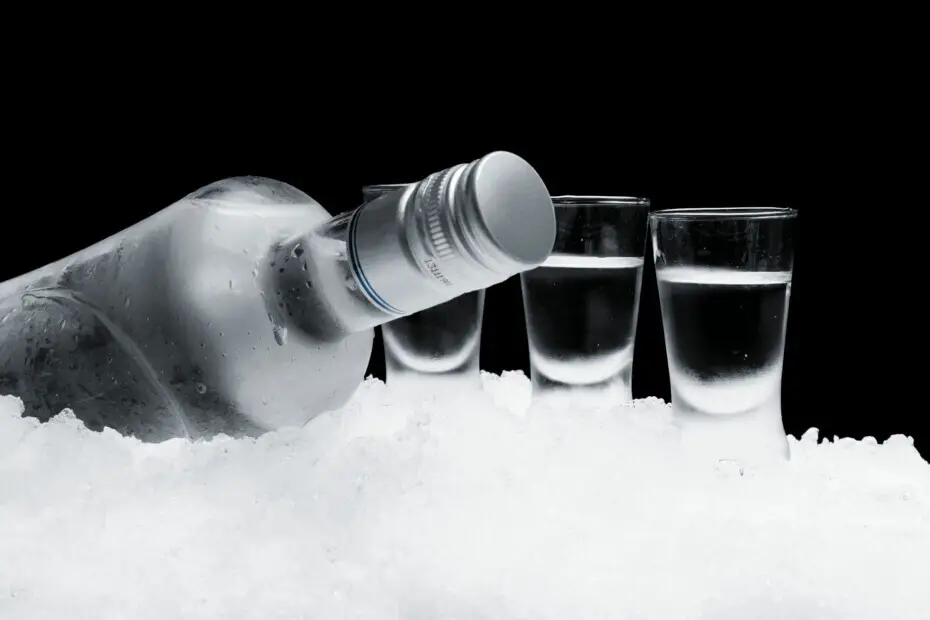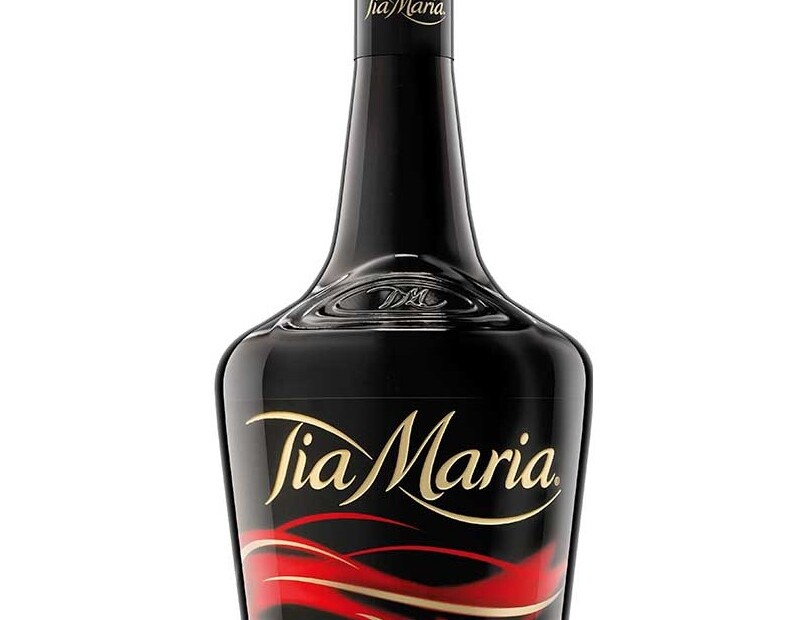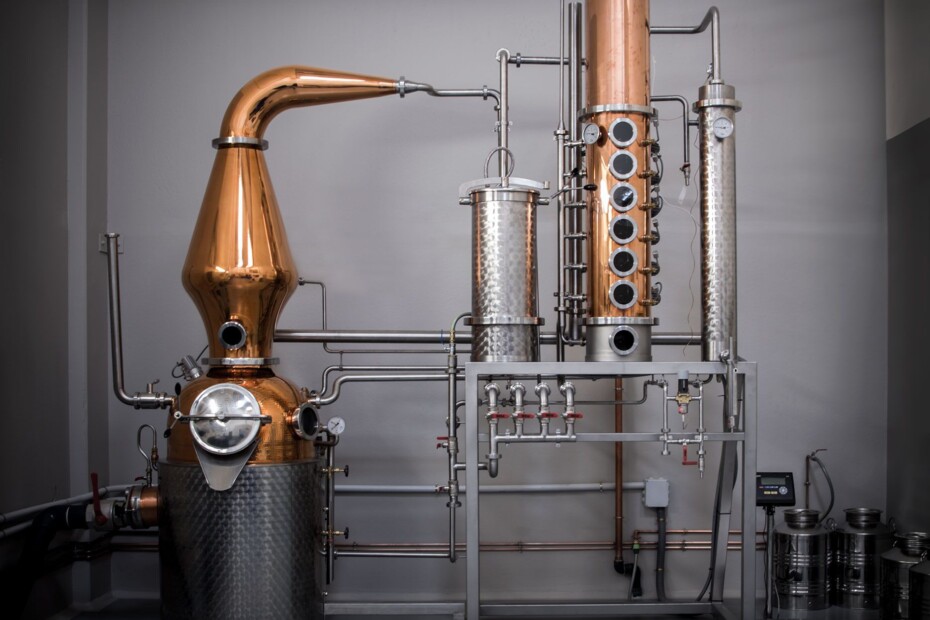do you like aguardiente and want to know everything about it? Grape brandy is one of the most famous distilled liquors in the world. For thousands of years it has accompanied the lives of those who prefer to enjoy any eventuality with its flavor. Aguardiente is even part of the gastronomic culture of some nations that make of it an elixir that remains rooted as part of their idiosyncrasy.
En esta nota, encontraras lo siguiente
what is Aguardiente?
Aguardiente is an alcoholic beverage made from the fermentation of a raw material, whose flavors and aromas are originated thanks to distillation. It also comes from a multitude of ingredients rich in sucrose, an essential element in its elaboration.
Origin of Aguardiente
The art of distillation has been known since ancient times, and it was used for the production of perfumes. It is said that it was brought by the Arabs to all of Europe, and it seems that they were responsible for its diffusion. 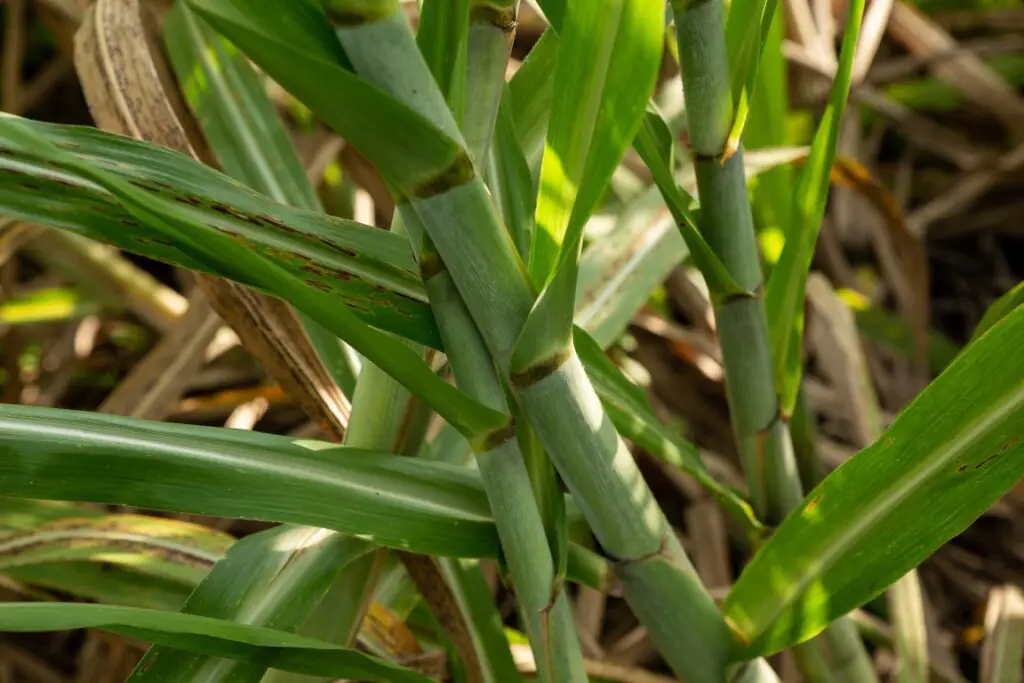 References indicate that it spread throughout Persia, Syria, Egypt and Sicily during the time of Alexander the Great, King of Macedonia, during the conquest and organization of the Persian Empire. The expansion of its dominions opened commercial channels that facilitated the influence of articles, species and customs between South Asia, South and Southeastern Europe, as well as with North Africa.
References indicate that it spread throughout Persia, Syria, Egypt and Sicily during the time of Alexander the Great, King of Macedonia, during the conquest and organization of the Persian Empire. The expansion of its dominions opened commercial channels that facilitated the influence of articles, species and customs between South Asia, South and Southeastern Europe, as well as with North Africa.
The origin of brandy in Europe was developed in Italy during the 13th century, when a group of scientists searching for an elixir that would ensure eternal life determined that it could be extracted from wine.
This gave way to distillation, which in turn gave rise to eau de vie, and as the art of distillation spread throughout Medieval Europe, eau de vie was positioned within each country. For many, this alcohol-rich beverage served as medicine to cure various pathologies, and it was considered by many a healing liquid par excellence, so it has always stood out thanks to its natural properties. Little by little the influence of this liquor was spreading around the world and absorbing different cultures, which were imprinting on it their own characteristics.
how many degrees of alcohol does aguardiente have?
Aguardiente is an alcoholic beverage that does not contain proteins, carbohydrates, fats or sugars, it also has vitamin K, and its alcoholic content is between 29% and 60%, which makes it a potent liquor.
how is aguardiente made?
Aguardiente is a high alcoholic beverage, which is obtained through fermentation and then distillation of fruits or cereals, or even a mixture of both. At present, two different styles can be distinguished, simple aguardiente and compound aguardiente.
Once the liqueur is defined, the raw material is fermented to obtain the natural sugars, and then the product is distilled through the use of stills, preferably copper stills, which gives way to this delicious liqueur.
Once the distillation process has been carried out, the liquor obtained tends to be filtered since it usually has a very high alcoholic content, and this is also done to purify the liquid obtained. If aging is desired, it is aged using empty bottles or oak barrels, depending on the brandy being made, this will allow the beverage to obtain a more persistent flavor and aroma.
what are the types of aguardiente that exist?
This beverage is a distillate that is characterized by two different categories which give it certain characteristics, thus, we can find: Aguardiente Simple and Aguardiente Compound. 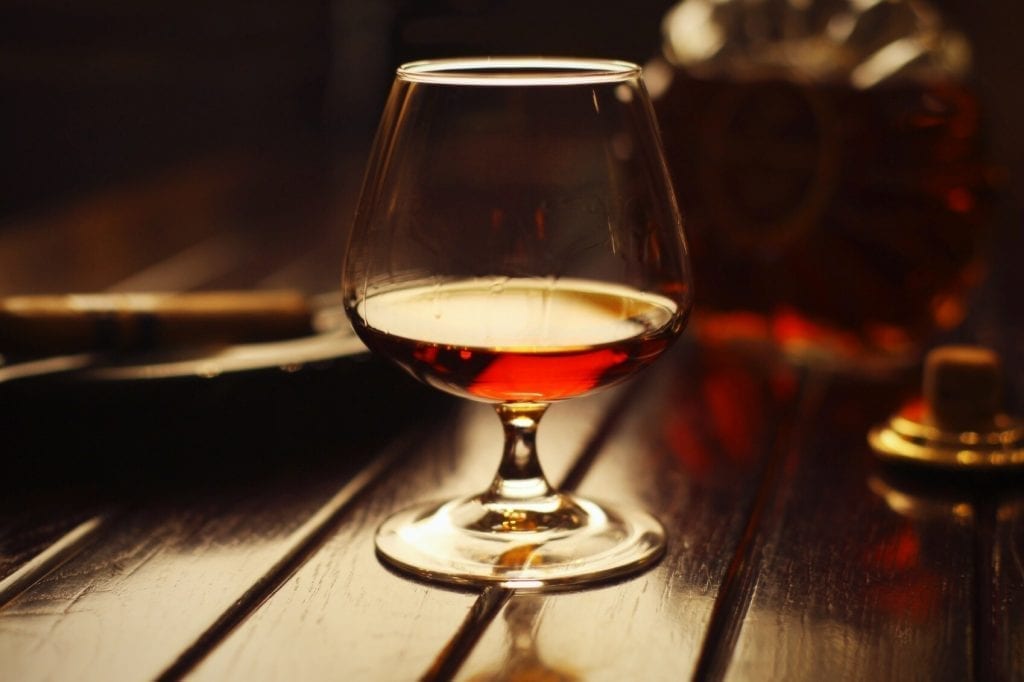
Aguardiente Simple
The simple spirit is the one that has no addition of flavors different from those of the spirit itself, that is to say, it is the one that comes directly from the still, without more or less. Among the main simple spirits we can mention the following:
- Rum
- Brandy
- Whisky
- Tequila
Fruit brandies as well as those obtained from palm tree or rice sap stand out.
Compound Spirits
The compound receives an important addition of flavors from substances that do not generate alcohol, such as herbs, anise seeds, spices, among others. Among the main compound liquors we can mention the following:
- Aniseed
- Benedictine
- Strega
- Absinthe
The types of this type of alcoholic beverage have derived in a classification that encompasses the main spirits that are elaborated the world, this classification groups them as follows:
- Wine spirits: Brandy, cognac, armagnac and pisco.
- Grape spirits: Orujos, marcs and grappas.
- Aniseed spirits: Aniseed.
- Cider spirits: Calvados, Spanish cider, applejack.
- Tuber and cereal spirits: Akuavit, gin, vodka, whiskey, sake.
- Sugar cane spirits and their residues: rum and cachaça.
- Agave spirits: Tequila and mezcal.
- Fruit spirits: Pear, apple, plum, among others.
what is Grape Brandy?
It is made from the pomace of the various grape varieties used in winemaking, which are drunk regardless of whether they are fresh or not, and comes from the distillation of wine lees in the presence of grape pomace or only from the distillation of grape pomace. 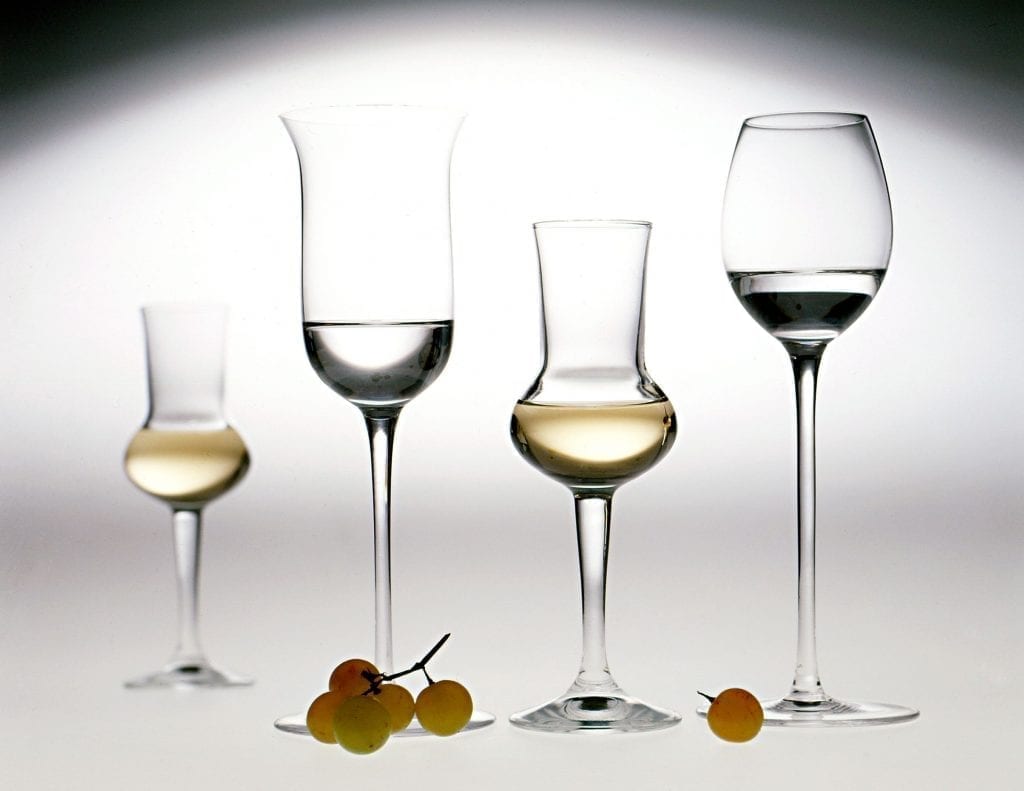 This grape alcoholic beverage is usually transparent, although there are also those with yellow tones, its own aroma of the vines used give it the right character that blends with a long, persistent and strong flavor.
This grape alcoholic beverage is usually transparent, although there are also those with yellow tones, its own aroma of the vines used give it the right character that blends with a long, persistent and strong flavor.
how is grape brandy made?
Among the best known are: marc, grappa, marcs, bagaçeiras and tsiroupos, spirits that use grapes as raw material in their production. The solid parts of the grape harvest that have no use in the previous winemaking process are used to make this type of eau-de-vie, and its distillation seeks the selective extraction of all the organoleptic components contained in the pomace. To this end, the distillation process is carried out in two phases: the first is the vaporization of the volatile elements of the pomace and the second is the condensation of the vapors produced.
Distillation
The grape spirit distillation process begins by loading the boiler with between 10% and 20% water, after placing the perforated copper base to avoid direct contact of the marc with the bottom of the boiler, and the fire is lit.
While the water is heating, the pomace is removed from the storage containers and spread with a rake, thus separating the portion richest in raspón, which is placed in the boiler, which will contribute to optimum vapor circulation. When the steam output is uniform, the joints are sealed with water or flour dough.
Care should be taken to keep the cooling water at temperatures between 18°C and 20°C, since low temperatures cause rapid condensations that give way to hard distillates, while high temperatures cause slow condensations that lead to the loss of favorable volatile components.
For the distillation of grape spirit, the heads and cores of the pomace should be used, rejecting the tails as they have alcohol content lower than 50% and do not contribute to the quality of the final liquor.
what is Anisette brandy?
It belongs to the compound type and has a pure alcohol as its ethyl base, so it can be said that it is the result of the continuous distillation of alcohol obtained from any plant with the addition of aniseed in its final phase. 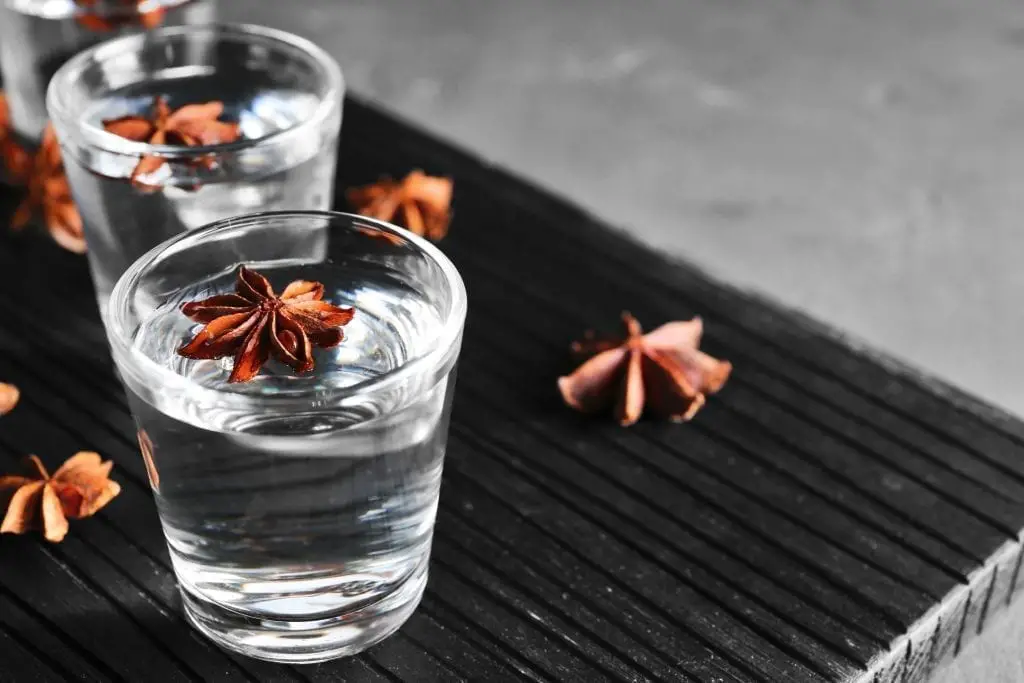 This interesting aniseed liqueur is usually transparent white, translucent and with aniseed aroma and flavor typical of the raw material that has made it so famous, which generates freshness on the palate.
This interesting aniseed liqueur is usually transparent white, translucent and with aniseed aroma and flavor typical of the raw material that has made it so famous, which generates freshness on the palate.
how is this alcoholic beverage made?
Aniseed brandy is made with alcohol and aniseed, and some people even prefer to add badian, fennel, fruits or seeds containing anethole. In order to obtain the relaxing properties of aniseed, the distillation process is carried out, which is responsible for producing the brandy itself.
The anise seed is placed in water and alcohol, which is rectified inside the distillery, which is usually made of copper, and is left to rest for a few hours or even a whole day. Then the liquid obtained is heated, which causes large amounts of gases that are transported through a duct to a container where it is refrigerated and becomes liquid again, starting again the whole process.
This type of liquor usually presents double and even triple distillation, since it originates a very strong liquor that must be graduated and purified until the desired liquor is obtained, which usually has an alcoholic graduation between 45%.
what is Aguardiente de Hierbas?
This is another alcoholic beverage that belongs to the group of compounds, and arises from the need to give a more pleasant flavor to the brandy itself, so the addition of herbs not only softens its flavor but also gives it very pleasant aromatic qualities. 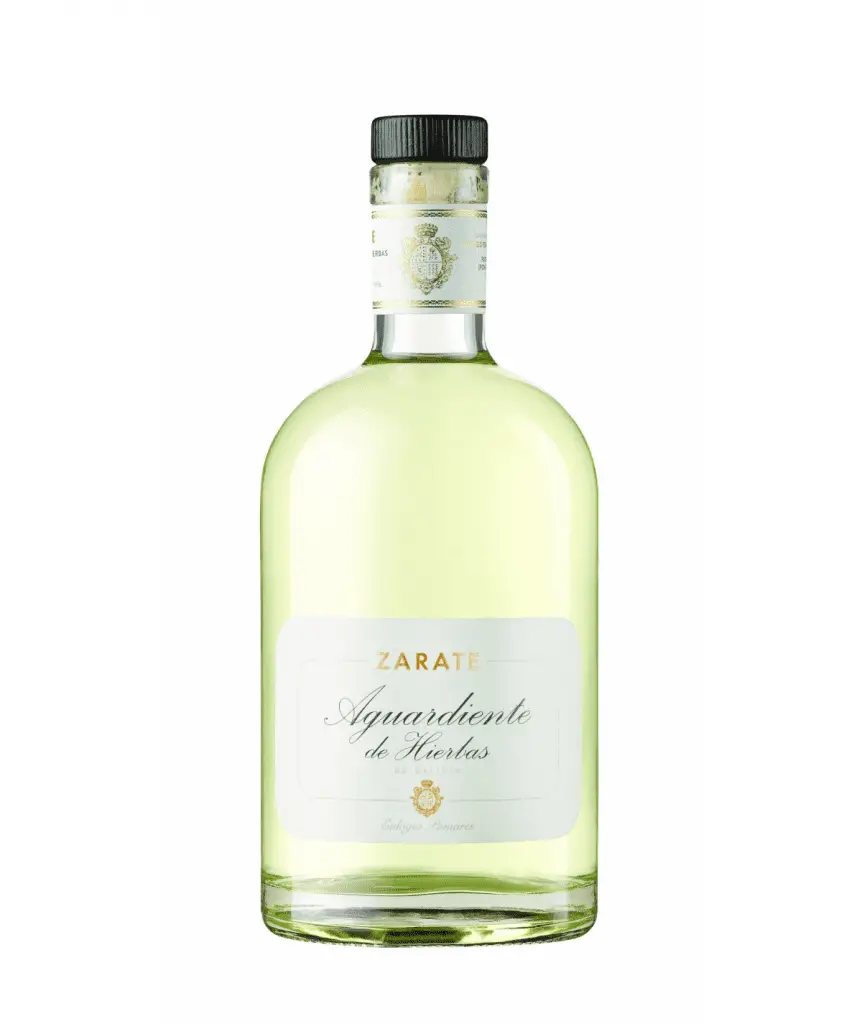 This delicious elixir usually has a golden, even dark or greenish color due to the mixture of herbs, although its aroma and flavor are usually well complemented as they are combined in a delicious fusion.
This delicious elixir usually has a golden, even dark or greenish color due to the mixture of herbs, although its aroma and flavor are usually well complemented as they are combined in a delicious fusion.
how is herb liqueur made?
Herbal liqueur is made through distillation and, like other compound liqueurs, it supports the addition of various herbs and even spices which are combined to create pleasant organoleptic qualities to the liqueur.
Many of those existing today are an enigma, since their original recipes are only known by those who produce them generation after generation, and the little that has been known about them is that they may contain up to 130 different herbs, which are responsible for giving them their own characteristics.
In general, a neutral alcohol is used, which is left to rest for a few hours or even days, with the herbs to be added, allowing them to impregnate the base liquid with their fragrance and flavor. Once the time has elapsed, it is cooked and distilled, this will allow obtaining a liquor with a high alcoholic graduation which, if desired, can be distilled again. Once the spirit with the desired alcoholic content is obtained, it is bottled and left to settle.
Liqueurs such as Strega, Chartreuse, Benedictine, Becherovka and Jagermeister belong to the group of compounds that have conquered palates since ancient times.
what is Agave brandy?
This liquor belongs to the group of the simple ones and is made with agave as raw material, among the most well-known ones we can mention: tequila, mezcal, cocuy, bacanora, among other distillates that use it as a base. 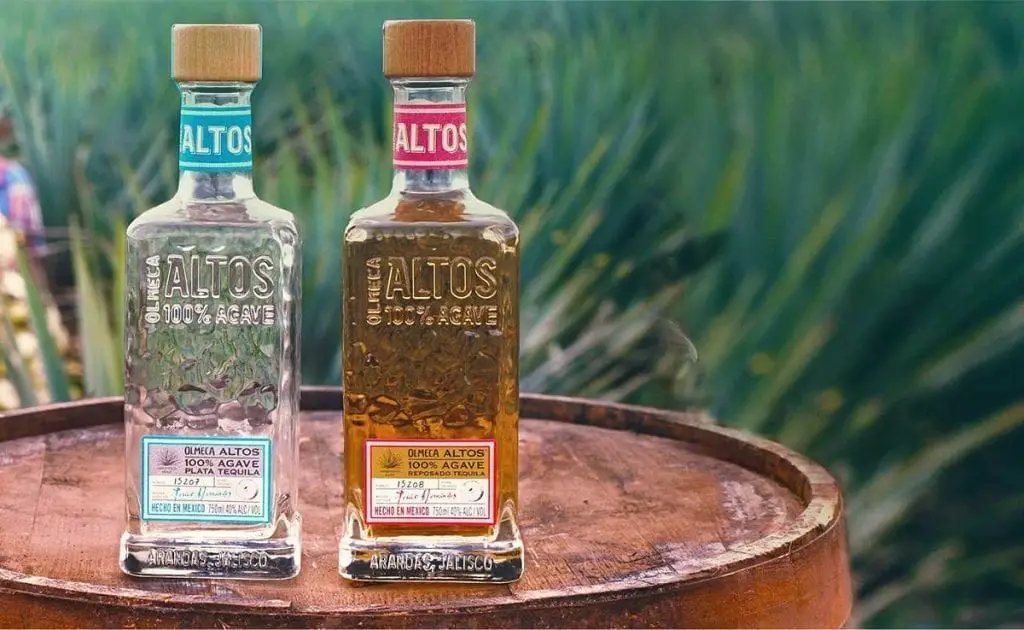 This alcoholic beverage usually presents a transparent color, although there are some with yellow tones as a result of its aging, even becoming completely amber. Its flavor is usually potent, with spicy notes, while its natural odor gives it a balanced taste.
This alcoholic beverage usually presents a transparent color, although there are some with yellow tones as a result of its aging, even becoming completely amber. Its flavor is usually potent, with spicy notes, while its natural odor gives it a balanced taste.
how are alcoholic beverages made with Agave?
This type of aguardiente, as we all know, usually uses agave as its main base and from there a whole process that is usually handmade, which allows obtaining a liquor with a high alcoholic content and which is part of the culture of some countries.
Its handmade production method allows the use of different types of agave for the production of aguardientes, the characteristic of these liqueurs is that its raw material takes more than 10 years to mature and be optimal for its use.
In general, the agave pineapples are first cooked, then they are ground to obtain a crushed raw material to be fermented for a few days in water. Once they have completed the fermentation cycle, the volatile substances are separated from the non-volatile ones, thus giving way to the distillation process. The heat causes the evaporation of alcohols and impurities, separating them from the solid materials, and when these gases are collected and return to their natural state, an alcohol is obtained that gives way to eau-de-vie.
what is corn spirit?
Corn is a cereal from which aguardiente is also made, and in recent years there have been many liqueurs made from corn, which have been gradually gaining strength thanks to their quality and demand. 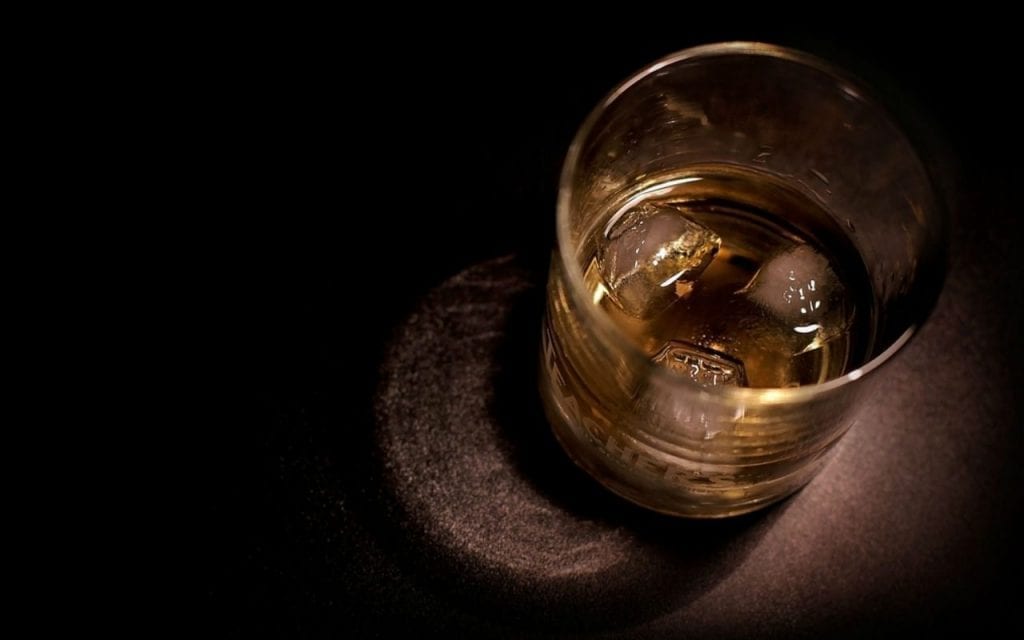 This corn-derived liquor usually has an amber color, aroma and flavor according to the cereal used but without being invasive, but rather, pleasant and with character. Among its main exponents nowadays, we can find whiskies made with this cereal, revolutionizing the established.
This corn-derived liquor usually has an amber color, aroma and flavor according to the cereal used but without being invasive, but rather, pleasant and with character. Among its main exponents nowadays, we can find whiskies made with this cereal, revolutionizing the established.
how is corn liquor made?
Thanks to cereals, it has been possible to create recipes for spirits that, far from seeming not to meet the required quality standards, leave everyone with their mouths open. This is the case of corn liquor, which enjoys the pleasure of the connoisseurs in the field.
To make corn liquor, the cereal is usually germinated slightly, which is commonly known as malting. Once this step has been carried out, it is placed in a container and stepped on to help heat the enzymes in the malt and convert the natural starch into sugar.
Once the first step is completed, the yeast is added and left to ferment for at least 15 days, thus generating a proper fermentation, which is the key to this liquor, and once the indicated time has elapsed, it is distilled through a still, preferably a copper one. some people distill it twice to give greater purity to the corn liquor and optimize its organoleptic qualities, besides, it usually produces a liquor with a high alcoholic content, so it is highly recommended to level it.
Once the distillation process is finished and the corn spirit is stable, it is bottled, and it is here when the producer decides whether to age it in oak barrels, which of course will enhance its flavor. This corn-based alcoholic beverage is currently part of the diverse world of mixology, and it is usually combined with other liquors to make different cocktail recipes that are making their way around the world day after day.
what is Apple Brandy?
This alcoholic beverage is part of the simple group, and it is made thanks to the use of this fruit that raises passions in more than one, since its flavor, freshness and pleasant aroma impregnate everything in its path. 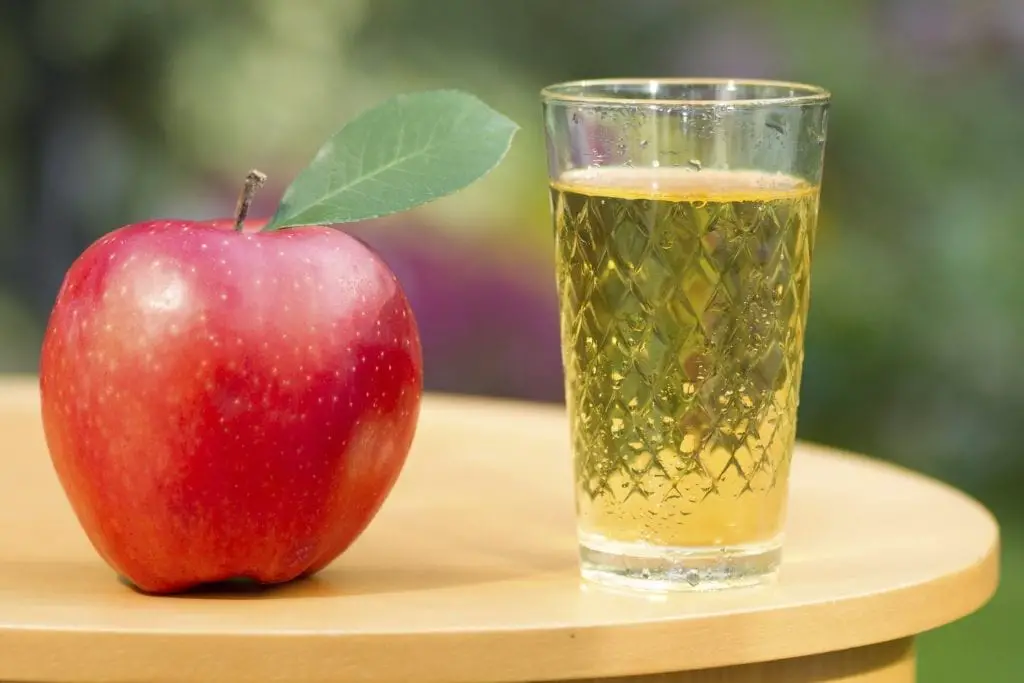 This apple delight tends to have a light yellow color with greenish tones, pleasant aroma and flavor with a bubbly touch that is characterized by being fresh and with typical notes of the raw material.
This apple delight tends to have a light yellow color with greenish tones, pleasant aroma and flavor with a bubbly touch that is characterized by being fresh and with typical notes of the raw material.
how is apple-based alcoholic beverage made?
For many people, apple brandy is nothing more than cider, and it is certainly made from alcohol and apple, and it is precisely this combination which, thanks to its elaboration process, generates a high quality liquor.
This liquor is made by treading the apples and obtaining a liquid which is mixed with alcohol and left to ferment with sugar for a few days. This mixture is distilled in a copper alembic still, which will produce a much more balanced liqueur with a high alcoholic content.
Once distilled, the contents are filtered and can be re-distilled by adding water, which will give it the desired and expected alcoholic content. Once the aguardiente is obtained, it can be bottled and left to settle for a few days at room temperature, which will bring out all its splendor and activate its aromatic and sensory qualities. As expected, cider and calvados are part of these apple brandies that are so famous around the world thanks to their quality.
what is the Aguardiente de Vino?
Perhaps one of the best known in the world, and within this classification we can find wines to which the lees have not been removed and to which a sulfurous addition has not been added. 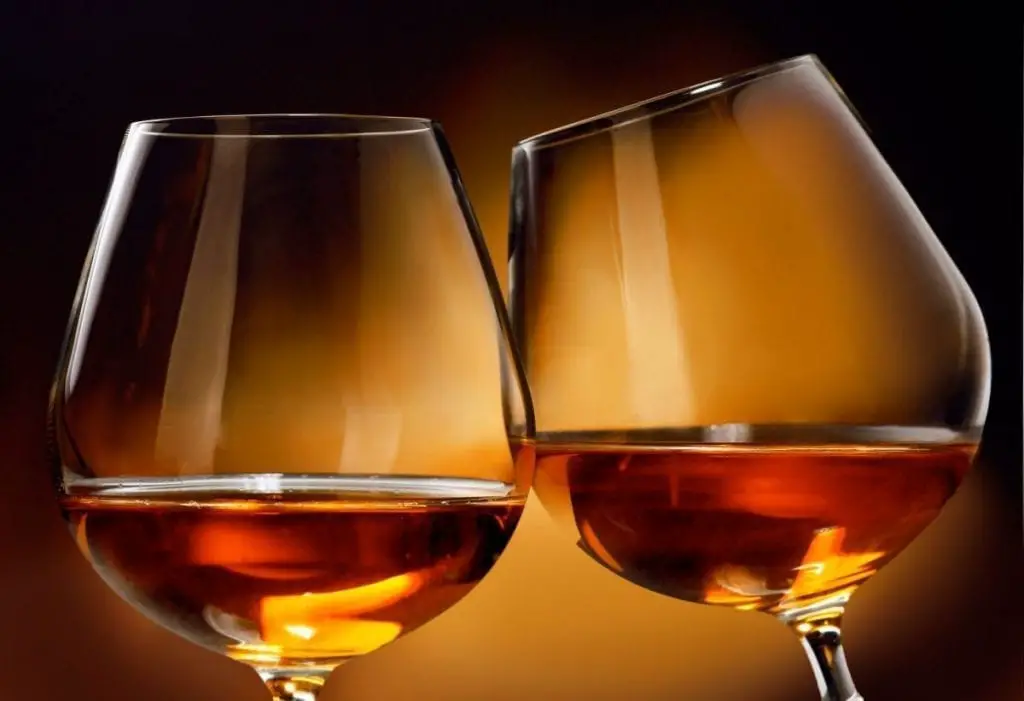 Among them we can find Brandy, Cognac, Armagnac and pisco, which also tend to have very similar characteristics, amber color with golden sparkles, impregnating aroma with citrus and wood notes that make it delicious, also when tasted you can appreciate a range of sensations.
Among them we can find Brandy, Cognac, Armagnac and pisco, which also tend to have very similar characteristics, amber color with golden sparkles, impregnating aroma with citrus and wood notes that make it delicious, also when tasted you can appreciate a range of sensations.
how is Aguardiente de Vino made?
This fascinating liqueur is made thanks to the distillation of wine, aged for a period of time that usually varies in oak barrels, which gives it its own characteristics and makes it a high-quality liqueur with an alcoholic content that usually ranges between 35% and 45%.
The grapes are harvested and de-stemmed, passed through a press that generates a grape juice which is left to ferment naturally in stainless steel tanks and once this step is completed, it is distilled in copper stills, which will result in a liquor with high alcohol content.
Once the distillation is completed, the wine is aged in oak barrels, resulting in a much more stable spirit with unique organoleptic characteristics. The aging phase is perhaps the most important part of wine spirits, since, in addition to providing decisive characteristics, it generates different wines, since according to the aging time, the liquor obtains certain special qualities.

